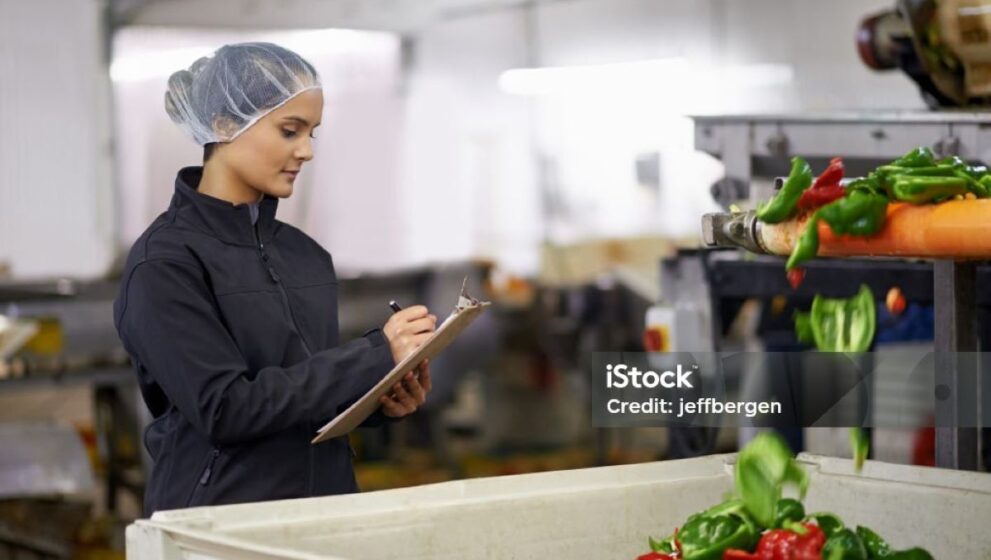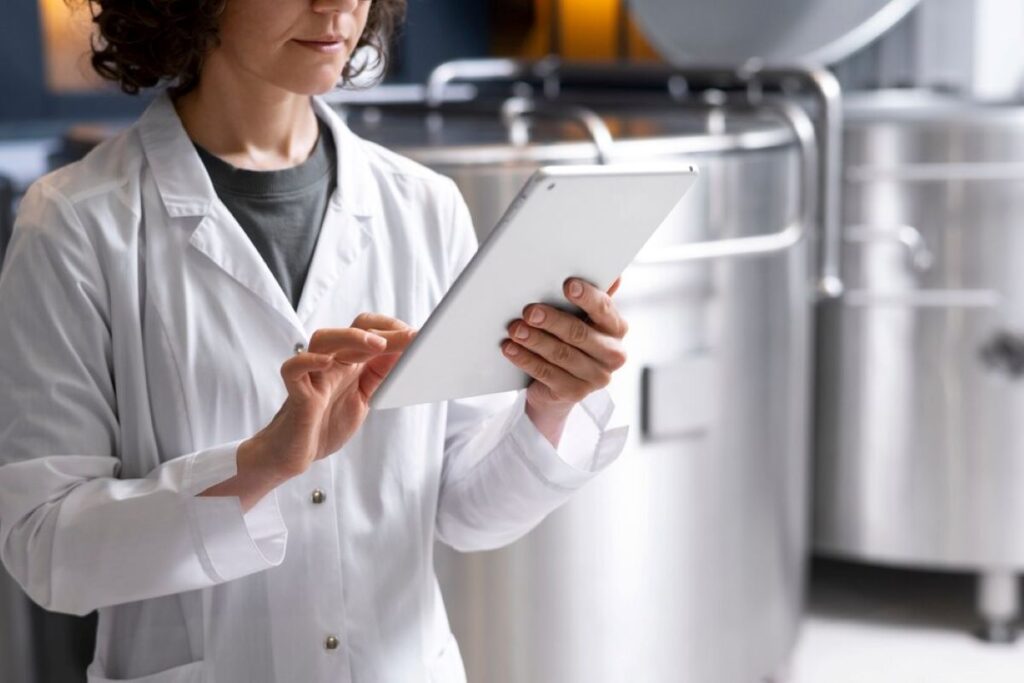Food Safety Temperature Monitoring: What It Is and Why It Matters
Food safety is a critical aspect of the food industry, encompassing various practices designed to prevent foodborne illnesses and ensure the well-being of consumers. One of the most vital components of food safety is temperature monitoring. This article delves into what food safety temperature monitoring entails, its significance, and how it can be effectively implemented in various settings.
Understanding Food Safety Temperature Monitoring
At its core, food safety temperature monitoring involves tracking the temperatures at which food is stored, prepared, and served. This process is essential for maintaining the quality and safety of food products. The temperature at which food is kept can significantly influence the growth of bacteria and other pathogens that can lead to foodborne illnesses.
The Science Behind Temperature Control
Food safety guidelines often specify critical temperature thresholds that must be adhered to in order to minimise the risk of bacterial growth. For instance, the ‘danger zone’ for food, which ranges from 5°C to 60°C, is where harmful bacteria thrive. Keeping food outside this temperature range is crucial for preventing contamination and ensuring that food remains safe for consumption.
Monitoring temperatures requires an understanding of the different stages of food handling, from storage in refrigerators and freezers to cooking and serving. Each stage has its own temperature requirements, and failure to meet these can lead to serious health risks. For example, raw meats must be stored at temperatures below 5°C to inhibit bacterial growth, while cooked foods should be kept hot, ideally above 60°C, until they are served. This vigilance not only protects consumers but also helps businesses comply with health regulations.
Types of Temperature Monitoring
Temperature monitoring can be categorised into two main types: manual monitoring and automated monitoring. Manual monitoring involves staff regularly checking and recording temperatures using thermometers, while automated monitoring employs technology to continuously track temperatures and alert staff to any deviations.
Both methods have their advantages and disadvantages. Manual monitoring can be more labour-intensive and prone to human error, whereas automated systems can provide real-time data and reduce the risk of oversight. Choosing the right method depends on the specific needs and resources of the establishment. For instance, smaller operations might find manual checks sufficient, while larger establishments or those with high turnover rates may benefit from the efficiency and reliability of automated systems. Additionally, integrating temperature monitoring with other food safety practices, such as regular staff training and audits, can further enhance food safety protocols, ensuring that all team members are aware of the critical nature of temperature control in preventing foodborne illnesses.
Why Temperature Monitoring Matters
The importance of temperature monitoring in food safety cannot be overstated. It plays a crucial role in protecting public health, maintaining food quality, and ensuring compliance with regulatory standards.
Preventing Foodborne Illnesses
Foodborne illnesses are a significant public health concern, affecting millions of people each year. Many of these illnesses can be traced back to improper food handling, including inadequate temperature control. By implementing effective temperature monitoring practices, businesses can significantly reduce the risk of foodborne illnesses and protect their customers.
Monitoring temperatures helps ensure that food is cooked to the appropriate internal temperatures, killing harmful bacteria. Additionally, it ensures that perishable items are stored at safe temperatures, preventing spoilage and contamination.
Maintaining Food Quality
Temperature monitoring is not only about safety; it also plays a crucial role in maintaining the quality of food. Foods that are not stored or cooked at the correct temperatures can lose their flavour, texture, and nutritional value. For instance, frozen foods that thaw and refreeze can develop freezer burn, while improperly cooked meats can become tough and unpalatable.
By closely monitoring temperatures, businesses can ensure that their food products retain their quality, leading to higher customer satisfaction and repeat business.

Regulatory Compliance
In many regions, including Australia, food safety regulations require establishments to implement temperature monitoring systems. Compliance with these regulations is essential for avoiding fines and legal repercussions. Regular temperature checks and proper documentation can demonstrate that a business is committed to food safety and quality.
In addition to avoiding penalties, compliance can enhance a business’s reputation. Consumers are increasingly concerned about food safety, and demonstrating adherence to regulations can build trust and confidence in a brand.
Implementing Effective Temperature Monitoring Practices
Establishing a robust temperature monitoring system requires careful planning and execution. Here are some key steps to consider when implementing temperature monitoring practices in a food business.
Choose the Right Equipment
Investing in reliable temperature monitoring equipment is crucial. Digital thermometers, data loggers, and wireless monitoring systems are all options that can help ensure accurate readings. When selecting equipment, consider factors such as ease of use, accuracy, and whether the device can provide alerts for temperature deviations.
Regular calibration of thermometers is also essential to maintain accuracy. This can be done by following the manufacturer’s guidelines or utilising calibration services as needed.
Establish Clear Protocols
Developing clear protocols for temperature monitoring is vital for consistency. This includes defining who is responsible for monitoring temperatures, how often checks should be conducted, and what actions should be taken in the event of a temperature deviation.
Training staff on these protocols is equally important. Employees should understand the significance of temperature monitoring, how to use the equipment, and the procedures for responding to temperature issues. Regular training sessions can reinforce these practices and keep food safety at the forefront of staff priorities.
Documentation and Record Keeping
Accurate documentation is a key component of effective temperature monitoring. Keeping detailed records of temperature checks can help identify patterns and trends, allowing businesses to address potential issues before they escalate.
Documentation also serves as evidence of compliance with food safety regulations. In the event of an inspection, having thorough records can demonstrate a commitment to food safety and help avoid penalties.
See Also : How Wireless Temperature Monitoring Enhances Food Safety in Real Time
Leveraging Technology for Enhanced Monitoring
In today’s digital age, technology can greatly enhance temperature monitoring practices. Automated systems and smart devices can provide real-time data and alerts, making it easier to maintain food safety standards.
Automated Temperature Monitoring Systems
Automated temperature monitoring systems use sensors to continuously track temperatures in storage units, cooking areas, and serving stations. These systems can send alerts to staff if temperatures fall outside the safe range, allowing for immediate corrective actions.
Such systems not only reduce the risk of human error but also free up staff to focus on other important tasks. Additionally, many automated systems can integrate with existing management software, providing a comprehensive view of food safety practices within the establishment.

Mobile Applications and Remote Monitoring
Mobile applications have revolutionised the way temperature monitoring is conducted. Many apps allow staff to log temperatures directly from their smartphones, making the process more efficient and user-friendly. Some applications even offer remote monitoring capabilities, enabling managers to oversee temperature data from anywhere.
This level of accessibility can enhance accountability and ensure that food safety practices are consistently upheld, regardless of staff shifts or changes.
Conclusion
Food safety temperature monitoring is an essential practice that protects public health, maintains food quality, and ensures compliance with regulations. By understanding the importance of temperature control and implementing effective monitoring practices, food businesses can significantly reduce the risk of foodborne illnesses and enhance their reputation.
Investing in the right equipment, establishing clear protocols, and leveraging technology can streamline temperature monitoring processes and promote a culture of food safety. Ultimately, prioritising temperature monitoring is not just about compliance; it is about safeguarding customers and building trust in the food industry.




